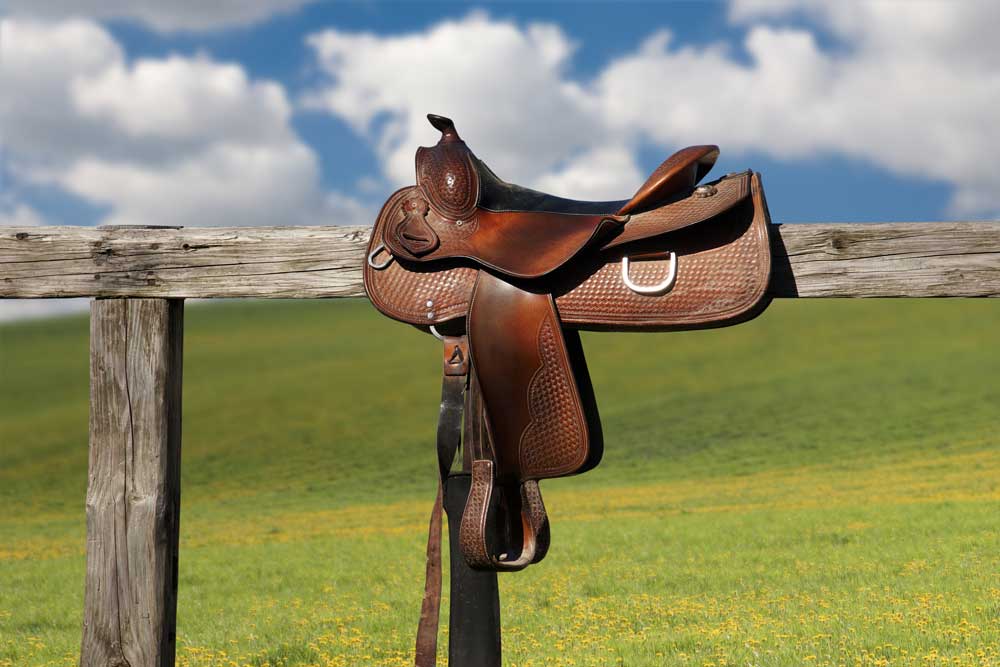Saddle fit for the recreational horse and rider.
Have you been noticing a trend in the equestrian industry? The demographics have been quietly changing over the last couple of decades. More and more female baby boomers are entering the riding world. Many used to ride when they were younger and have taken up the saddle again – but almost as many are finding their way to the sport as first time riders, and are enjoying a relationship with their horses that allows them to exercise their need to nurture and love. Often, their retired husbands are out on the golf course, children are away at school, and they are at the pinnacle of their careers with the discretionary income and time to spend with their new circle of friends at the barn.
What these riders seriously care about is their own comfort and safety, and the comfort and health of their horses. They generally tend towards the “gentler” aspects of the sport – forgoing jumping, hunting, eventing and the like in favor of dressage, endurance or trail riding. Long term comfort in the saddle is key – for both horse and rider – especially for trail riding.
For each of these, a myriad of considerations will ensure comfort in the saddle, and pages can and have been written about each aspect of proper saddle fit. For the sake of this article, I will mention the various points briefly and in their entirety; but I intend to focus mainly on the panel options to accommodate your horse’s back.
Female Saddle Fit
For the female rider, the main point of consideration should be the choice of a gender appropriate saddle. What this simply means is that the saddle should be made to accommodate the various “vagaries” of the female anatomy.
• The stirrup bars should be extended to allow the proper positioning of the leg (which in a woman is generally longer from hip to knee than from knee to ankle). This affects the center of gravity and how the leg will hang naturally in the stirrups.
• The seat itself should be wide enough to accommodate the seat bones – which will be wider apart than a man’s because of the birthing channel.
You will want to avoid hitting the pubic symphysis at the front of the saddle, so there should be either an air/gel pocket cut out or enough padding at the front to ensure this area is protected.
• The twist (that area between your upper inner thighs) should be narrow enough to allow you to sit comfortably without feeling like your hips are being pulled apart.
• There should be enough support at the cantle of the saddle to ensure you are secure in your seat without collapsing back into the saddle – which affects your spinal curvature and will not allow the four natural curves of your spinal column to act as shock absorbers during motion.
Saddle Fit for Your Equine
The saddle itself should be fitted properly to the horse at various areas – each of which could also be the subject of an article in itself.
• The tree width and angle should align with the shape and size of the horse’s shoulder to allow it to move freely upwards and backwards during motion (think of sliding doors – that is the type of freedom you want, to avoid damaging the shoulder cartilage at the tree points).
• There should be two to three fingers of space all around the wither, not just at the top
. • The gullet channel should be wide enough (generally three to four fingers, depending on breed) to accommodate the spinal processes without impinging the nerves of the back.
• The length of the saddle should be no longer than the saddle support area, which generally begins at the base of the wither and ends at the 18th lumbar vertebra (you can feel for yourself where the last floating rib is, which is below the 18th lumbar vertebra).
Saddle Panel Construction
Panels are traditionally available in felt, foam, wool/synthetic mixes, air, or serge/sheepskin (as in Western saddles). I will discuss the main ones usually found in English saddles. All have their advantages and disadvantages, but my choice is usually a wool/ synthetic mix because it holds its shape fairly well, springs back after compression and use, is easy to adjust, and is quite comfortable for the horse – if it has been fitted properly, which does take some finesse and manual dexterity. You don’t want to over- or understuff, and you want to keep it smooth without lumps.
Both felt and foam come ready made and pre-formed in the panel, and are unfortunately usually linked to very narrow gullet channels. They are limited in their adjustability and in their accommodation of the horse’s back; either the saddle fits or it doesn’t (and at this point they are usually linked with the use of all sorts of pads to accommodate the position of the saddle, which is often too high in the front and too low in the back).
Air is a fairly recent “invention” as a panel filling; pre-filled nonadjustable air panels (for example Cair) also either fit or don’t fit – but since air is a moveable commodity, some accommodations to fit can usually be effected. There are adjustable (i.e. re-fillable) air bags in panels as well (such as Flair) that can be changed as necessary, but generally by a trained technician. Air-filled panels have been shown to allow a quicker recovery of the stride after a jump than conventional panels.
These are just a few points to ensure you enjoy your trail ride to the max. Happy trails!
Jochen Schleese is a Certified Master Saddler who graduated from Passier and came to Canada as Official Saddler at the 1986 World Dressage Championships. He registered the trade of saddlery in North America in 1990. Jochen’s lifelong study of equine development, saddle design, the bio-mechanics of horse and rider in motion, and the effects of ill-fitting saddles, led to the establishment of Saddlefit 4 Life in 2005 (saddlefit4life.com), a global network of equine professionals dedicated to protecting horse and rider from long term damage.








